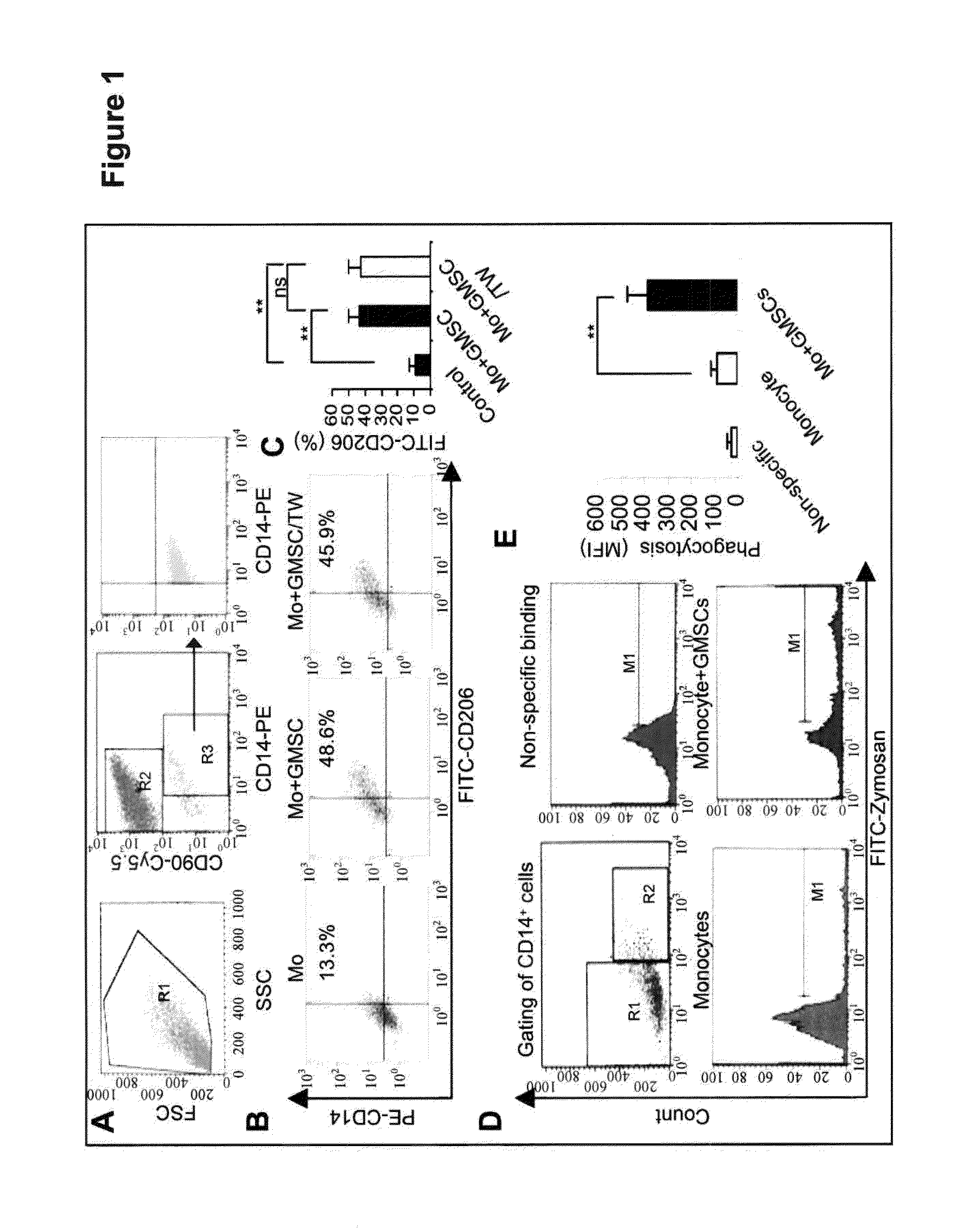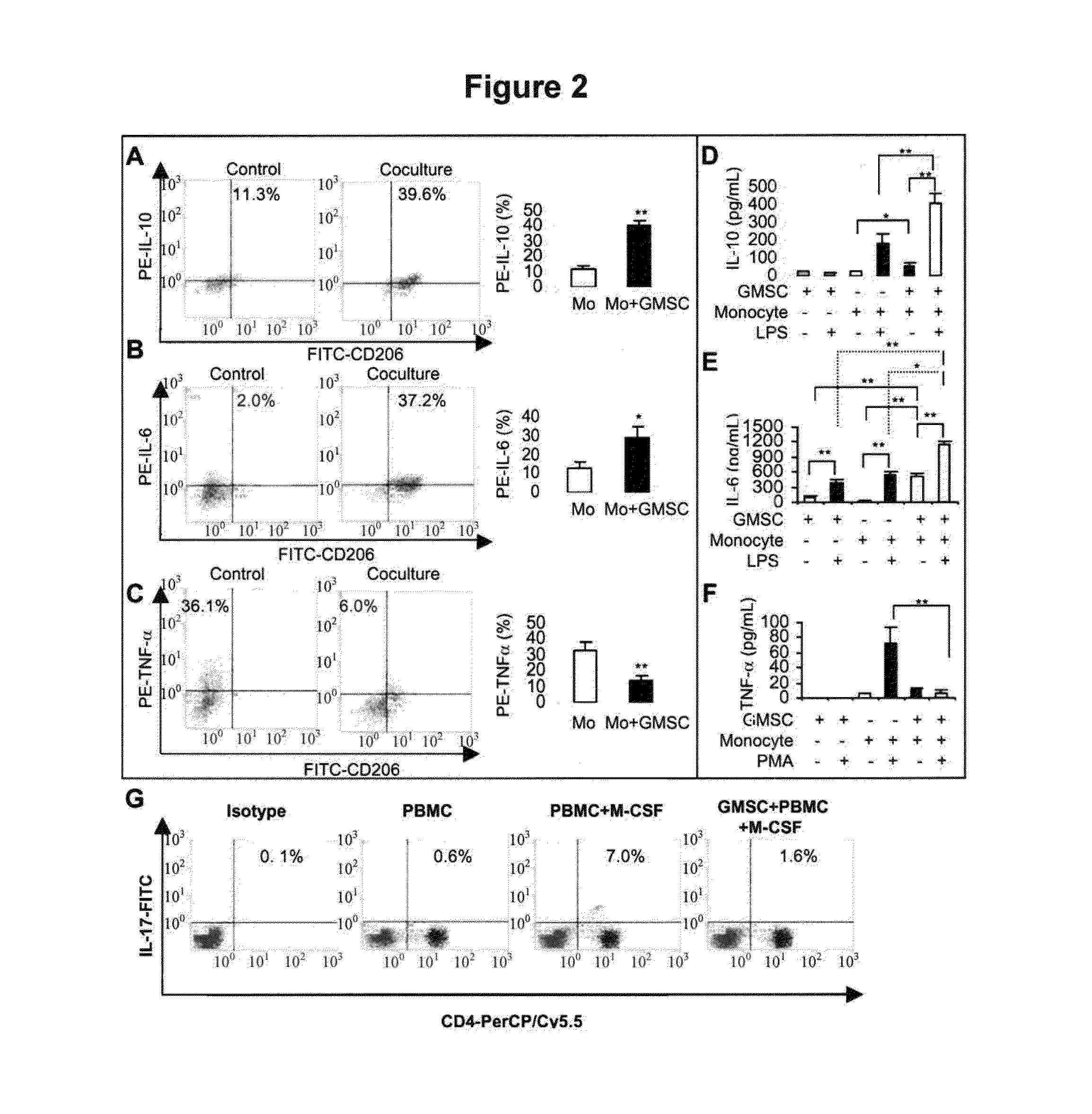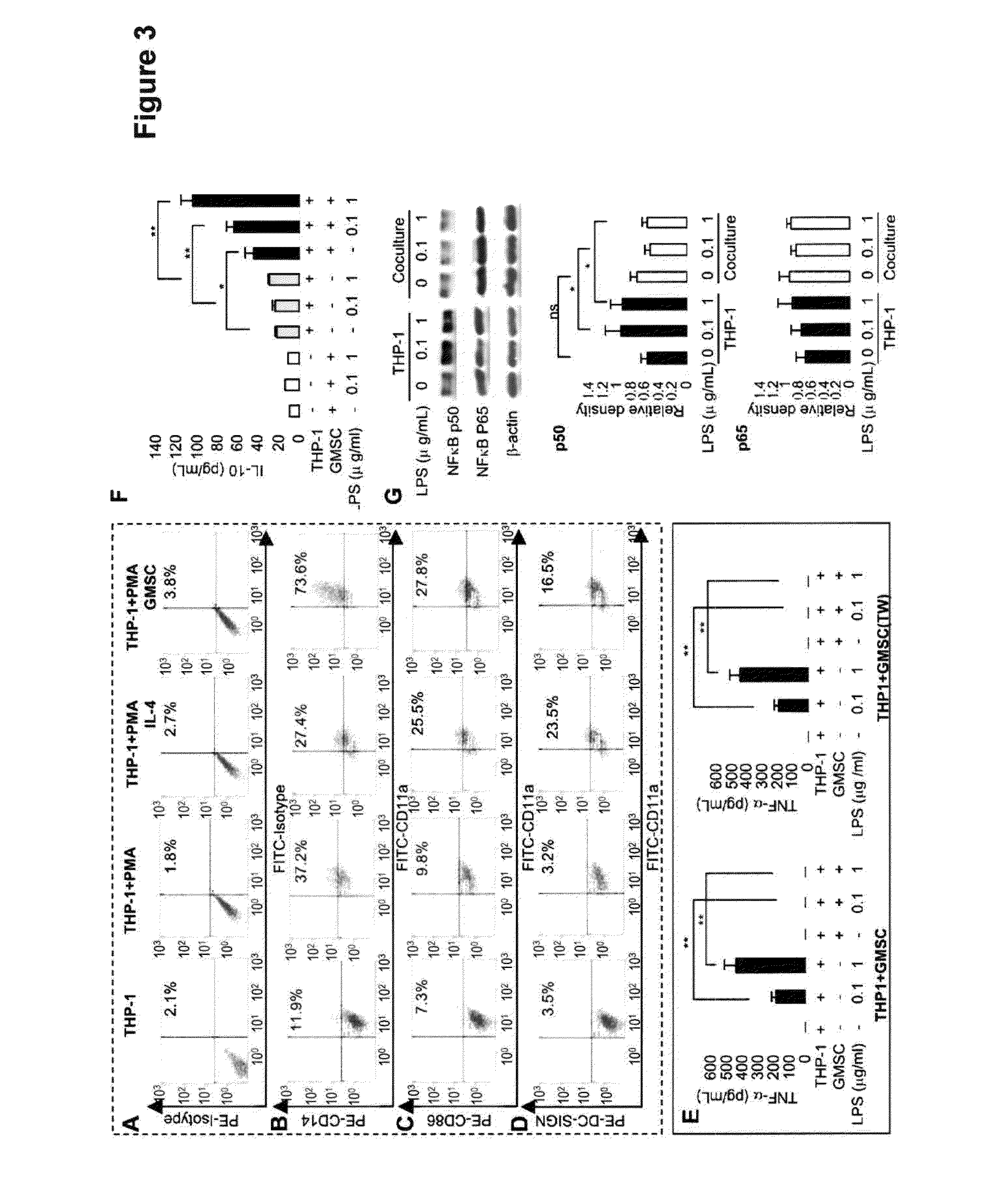Pharmaceutical Compositions Comprising Gingiva A-Derived Mesenchymal Stem Cells and Methods of Treating Inflammation, Wound Healing and Contact Hypersensitivity
- Summary
- Abstract
- Description
- Claims
- Application Information
AI Technical Summary
Benefits of technology
Problems solved by technology
Method used
Image
Examples
example 1
Interplay Between GMSCs and Macrophages Regulated the Local Inflammatory Response During Skin Wound Healing
[0064]We next investigated the in vivo effects of GMSCs on inflammatory cell response and production of local inflammatory cytokines in skin wounds. Analysis of skin wounds on day 3, 5, and 7 following GMSC injection indicated that infiltration of inflammatory cells was significantly decreased in GMSC-treated wounds as compared to controls (FIG. 6C). GMSC treatment decreased neutrophil infiltration as represented by a time-dependent decrease in MPO activity in wounded skin at several time points post-wounding (FIG. 6Da). In addition, ELISA analysis showed that GMSC treatment significantly decreased the local levels of both proinflammatory cytokines, TNF-α and IL-6, and increased the anti-inflammatory cytokine IL-10 (FIG. 6Db-d). Without being limited by theory, it is believed that GMSC treatment promotes skin wound healing, at least in part, by suppressing inflammatory cell inf...
example i
Materials and Methods Used in Example I
[0066]Animals.
[0067]C57BL / 6J mice (male, 8-10 week-old) were obtained from Jackson Laboratories (Bar Harbor, Me., http: / / www.jax.org) and group-housed at the Animal Facility of University of Southern California (USC). All animal care and experiments were performed under the institutional protocols approved by the Institutional Animal Care and Use Committee (IACUC) at USC.
[0068]Cytokines and Reagents.
[0069]Recombinant human IL-4, CCL-2 (MCP-1), IL-6 and M-CSF were purchased from PeproTech (Rocky Hill, N.J., http: / / www.peprotech.com). Lipopolysaccharide (LPS) from Escherichia coli 055:B5, phorbol 12-myristate 13-acetate (PMA), Brefeldin A were obtained from Sigma-Aldrich (St. Louis, Mo., http: / / www.sigmaaldrich.com). Antibodies include anti-CD14 allophycocyanin (APC), anti-CD11a fluorescein isothiocyanate (FITC), anti-CD90 peridinin chlorophyll protein (PerCp)-Cy5.5, anti-IL-6-PE, anti-IL-10-PE, anti-TNFα-PE and anti-IL-17-FITC (eBiosciences, San...
example ii.b
GMSCs Attenuate CHS Via PGE2-Dependent Inhibition of DCs
[0098]Previous studies have demonstrated that DCs play a critical role in the initiation of CHS (67-70), while bone marrow- and adipose-derived MSCs are capable to inhibit their immune functions (71). Here, we postulated that attenuation of CHS by GMSCs might involve the inhibition of DC functions. To test our hypothesis, GMSCs (2×106 / mice) were systemically injected into mice one day before sensitization and sacrificed 2 days after challenge. Immunostaining showed that GMSC treatment robustly reduced the number of CD11c+ DCs at both the regional dLNs (FIG. 9A) and the antigen challenged ears (FIG. 15D). The reduction in the number of CD11c+ DCs in LNs caused by GMSC treatment was further confirmed by flow cytometric analysis (FIG. 9B).
[0099]We next performed a series of in vitro studies to confirm the inhibitory effect of GMSCs on DCs. To this end, CD14+ monocytes purified from peripheral blood mononuclear cells (PBMCs) of hea...
PUM
 Login to View More
Login to View More Abstract
Description
Claims
Application Information
 Login to View More
Login to View More - R&D
- Intellectual Property
- Life Sciences
- Materials
- Tech Scout
- Unparalleled Data Quality
- Higher Quality Content
- 60% Fewer Hallucinations
Browse by: Latest US Patents, China's latest patents, Technical Efficacy Thesaurus, Application Domain, Technology Topic, Popular Technical Reports.
© 2025 PatSnap. All rights reserved.Legal|Privacy policy|Modern Slavery Act Transparency Statement|Sitemap|About US| Contact US: help@patsnap.com



